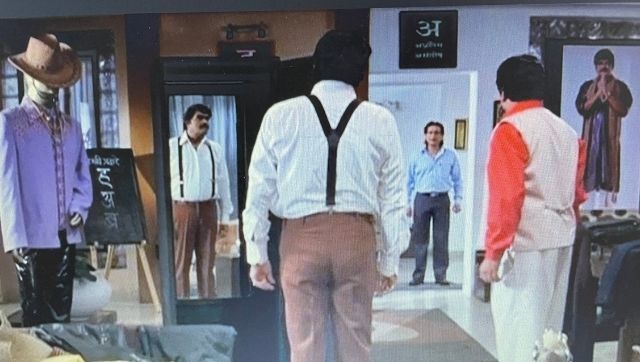Movies and shows, old and new, have helped us to live vicariously through them. They have allowed us to travel far and wide at a time borders are shut and people are restricted to homes. In our new column What’s In A Setting, we explore the inseparable association of a story with its setting, how the location complements the narrative, and how these cultural windows to the world have helped broaden our imagination. * Over a year ago, when the COVID-19 pandemic was yet to take complete hold over nearly every aspect of our lives, my home — the humble abode of six outrageously loud people — was in the habit of witnessing a steady stream of activity all day long, abuzz with chatter and the arrival and departure of dozens of visitors. On days like these, multiple scenes would play out in the house at the same time in controlled chaos. I remember one such morning when an electrician called in to fix a broken connection yelled instructions to no one in particular, two painters splashed colour on the walls of the drawing room, vegetables and gravy were stirred on the gas range, a group of friends of one of the house’s youngest residents cloistered on the veranda sipping on coffee that was handed out the kitchen window, and the cat mewled at the front door demanding her saucer of milk. All around, loud voices merged into one another, creating a din as a dozen people – twice the population of the house’s occupants – talked simultaneously about just as many topics, ranging from treks and road trips to wiring and plastering to ingredients and recipes. Oh, the noise! On that day, just as I had many times before, I struggled to find a quiet spot to write in solitude, an honest challenge for many who live in a household with people who like to, well… talk. But unsurprisingly, it is this flurry, bustle, and activity that I find myself longing for the most in the post COVID-19 world, in which an eerie quiet announces our collective loneliness, and the lack of human company is evident in the monotony of a socially distanced routine. In the first few months after the coronavirus hit, the generally open and breezy vibes that our home usually radiates were replaced by heaviness and anxiety as we watched the country come to grips with this crisis. Despite being in a house full of chatty people, we found ourselves isolated in our minds, as each one tried to cope with the pandemic and its collateral damage in their own distinct way. On such particularly dismal days, I found myself re-watching or at least enacting the punchlines (which I still do) out of the 2009 Marathi comedy Ek Daav Dhobi Pachhad (loosely translated as knocked out in one punch). Directed by Satish Rajwade, this ensemble movie, that has quite a cult following, unfolds over the course of one day, in one bungalow and reaffirms my belief that a house is more than just brick and mortar; rather a powerful setting where countless stories are unfolding all at once. The film revolves around the relatively simple story of Dada Dandge (Ashok Saraf), a big-time thug in the small village of Bhongalpoor, who decides to leave behind a life of crime to win back his long-lost love, Hema (Kishori Shahane). But inextricably linked to Dada’s household are the lives of multiple characters, each of whose dilemmas have become a ‘jeevan maranacha prashna’ or a matter of life and death.
During the lockdown, I found myself returning to this house of comedy and the story it told because despite all of us being under one roof for most of our time, my own home, instead of functioning like a smooth, well-oiled machine, was just as chaotic and confusing as before.
Still, there was a difference, and it was subtle. Underlying the trifles of spilled milk or lies about deadlines to avoid running errands was an intense anxiety that rose every day with the rising number of cases. This disquieting turn of events rendered us angsty, made us bicker amongst ourselves, and situations that we once found funny now made us irritable. Through it all, the house stood as it were, becoming a sanctuary that sheltered our family. During those months, I enjoyed the comedy of this ‘other’ house, which connected multiple strands together and fostered a feeling of continuity in the stories of all the characters who weave a complex, often misguided web of lies and confusion around themselves.
)